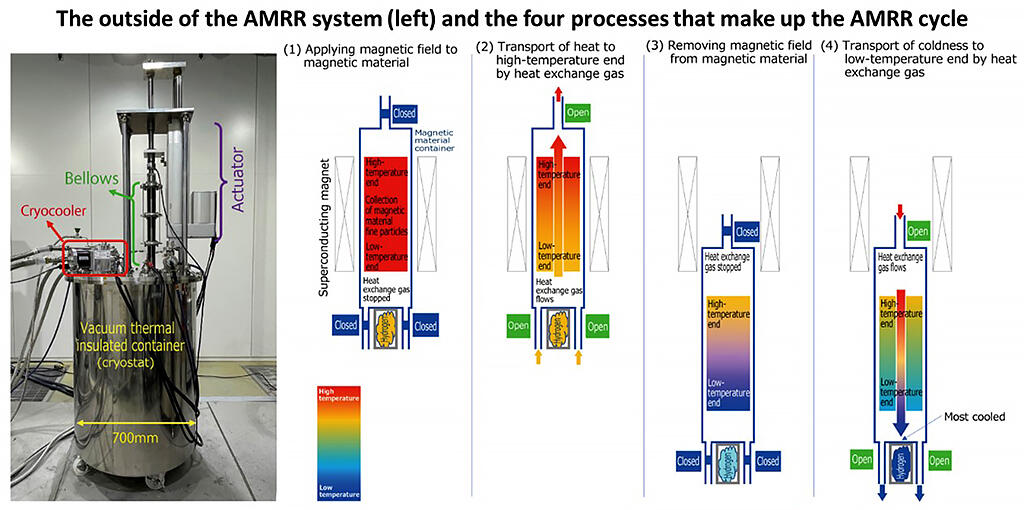The use of hydrogen energy is being accelerated to realize a decarbonized society by 2050. Liquefaction technology, which changes the state of hydrogen from gas to liquid and so reduces transportation and storage costs, is the key to popularization of this energy. The efficiency of the gas refrigerators currently in use is low - around 25% - and this is one of the main causes of rising hydrogen production costs. Moreover, magnetic refrigeration that controls the magnetic moment of magnetic materials to generate and/or absorb heat could theoretically possess more than 50% efficiency, but in real life this has a narrow cooling operational range (around five degrees), and so has not been put into practice.
From this background, a research team consisting of Group Leader Koji Kamiya of the Magnetic Refrigeration System Group of the National Institute for Materials Science and his colleagues focused on active magnetic regenerative refrigeration (AMRR). Applied research on this is going ahead on household appliances in a normal temperature range, such as air-conditioning. Conventional AMRR has a wide operating temperature range, but it was considered difficult to realize in cryogenic (extremely low) temperatures; however, the team has developed a mechanism that causes highly efficient magnetic field change with little heat generation by moving a magnetic material in and out of the magnetic field of an optimized superconducting magnet. In parallel to this, the group has developed a heat exchanger with an optimal configuration for AMRR and improved the form of the magnetic material; they have also expanded the cooling operational temperature range and realized a stable AMRR cycle in cryogenic temperatures, succeeding in hydrogen liquefaction by AMRR for the first time in the world.
As they work toward practical implementation, one of their targets is to realize a liquefier capable of producing about 100 kg of liquid hydrogen a day with a liquefaction efficiency of 50%. In the future, they will increase the liquefaction output, ensure the high efficiency of the heat exchange gas circulation system and increase the size of the AMRR system, aiming to reduce hydrogen production costs.

When processes (1) to (4) are repeated, the low-temperature end at the bottom of the magnetic material container gradually cools, the temperature of the hydrogen in the hydrogen container lowers, and it eventually liquefies.




